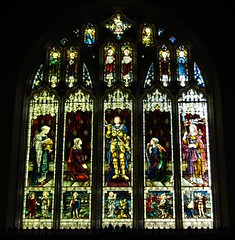Ever wanted to model yourself after Leonardo?
Here's the final notice from a program in Indiana.
**** F I N A L N O T I C E *****
APPLICATION DEADLINE: *** MAY 1, 2008 ***
***** NATIONAL HUMAN CADAVER PROSECTION PROGRAM *****
Indiana University School of Medicine-Northwest Dunes Medical Professional Building 3400 Broadway Gary, Indiana University
PROGRAM SPONSOR: ZIMMER, Inc. (Zimmer Orthopedics)
**** Human Cadaver Dissection **** **** Radiology **** **** Orthopedic Surgery Demonstrations ****
Applications for the July 2008, NATIONAL Human Cadaver Prosection Program at the Indiana University School of Medicine-Northwest(IUSM-NW) are now being accepted. The application form is available online at the IUSM-NW Web Site (URL:
http://iusm-nw.medicine.iu.edu). The Cadaver Prosection page is linked to the IUSM-NW front page. [Click on "IUSM-Northwest Educational Programs, and then "Cadaver Prosection"]
The Cadaver Prosection will be held on Wednesday, July 30 and Thursday, July 31, 2008, from 8:00 a.m. - 5:00 p.m., and will include 2 evenings of preparatory work in late June.
Selected participants who complete the program will receive a certificate of completion, honorarium and certification for work with biohazards and blood-borne pathogens. All will have extensive hands-on experience professionally dissecting human cadavers, and will receive intensive exposure to human gross anatomy and radiology.
Zimmer Orthopedics will conduct a special lecture presentation and accepted applicants will participate in a hands-on orthopedic workshop. CME Credit is offered for the NATIONAL Human Cadaver Prosection Program.
You need not be a medical professional or pre-medical student to participate. All are encouraged to apply. Prior participants have included pre-med and pre-vet, nursing, radiological technology, mortuary science students, other undergraduate and graduate students, teachers, attorneys, lab technicians, etc.
For further information go to the Cadaver Prosection Page, or contact the program director:
Ernest F. Talarico, Jr., Ph.D.
TEL: 219-981-4356
Email: etalaric@iun.edu
Send (ordinary mail or email) your application materials to:
Ernest F. Talarico, Jr., Ph.D.
Assistant Director of Medical Education
Indiana University School of Medicine - Northwest Campus Dunes Medical
Professional Building Room 3028A 3400 Broadway Gary, IN 46408











































